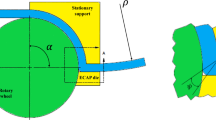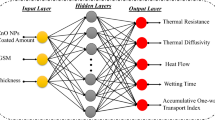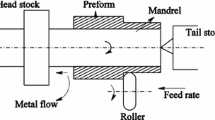Abstract
Yarn tenacity directly affects the winding and knitting efficiency as well as warp and weft breakages during weaving process and therefore, is considered as the most important parameter to be controlled during yarn spinning process. Yarn tenacity is dependent on fiber properties and process parameters. Exploring the relationship between fiber properties, process parameters and yarn tenacity is very important to optimize the selection of raw materials and improve yarn quality. In this study, an efficient monarch butterfly optimization-based neural network simulator called MBONN was developed to predict the tenacity of siro-spun yarns from some process parameters and fiber properties. To this end, an experimental dataset was obtained with fiber fineness, yarn twist factor, yarn linear density and strand spacing as the input variables and yarn tenacity as the output parameter. In the proposed MBONN, a monarch butterfly optimization algorithm is applied as a global search method to evolve weights of a multilayer perception (MLP) neural network. The prediction accuracy of the MBONN was compared with that of a MLP neural network trained with back propagation algorithm, MLP neural network trained with genetic algorithms and linear regression model. The results indicated that the prediction accuracy of the proposed MBONN is statistically superior to that of other models. The effect of fiber fineness, yarn linear density, twist factor and strand spacing on yarn tenacity was investigated using the proposed MBONN. Additionally, the observed trends in variation of yarn tenacity with fiber and process parameters were discussed with reference to the yarn internal structure. It was established that higher migration parameters result in increasing the siro-spun yarn tenacity. It was found that the yarns with higher migration parameters benefit from a more coherent self-locking structure which severely restricts fiber slippage, thereby increasing the yarn tenacity.













Similar content being viewed by others
Notes
\( ceil\left( x \right) \) rounds \( x \) to the nearest integer greater than or equal to \( x \).
References
Anandjiwala RD, Goswami BC, Bragg CK, Bargeron JD (1999) Structure-property relationship of blended cotton yarns made from low and high tenacity fibers. Text Res J 69:129–138
Arora S, Singh S (2018) Butterfly optimization algorithm: a novel approach for global optimization. Soft Comput. https://doi.org/10.1007/s00500-018-3102-4
Asadi S, Hadavandi E, Mehmanpazir F, Nakhostin MM (2012) Hybridization of evolutionary Levenberg–Marquardt neural networks and data pre-processing for stock market prediction. Knowl Based Syst 35:245–258
Bansal S (2014) Optimal golomb ruler sequence generation for FWM crosstalk elimination: soft computing versus conventional approaches. Appl Soft Comput 22:443–457. https://doi.org/10.1016/j.asoc.2014.04.015
Bansal S (2018) Nature-inspired-based multi-objective hybrid algorithms to find near-OGRs for optical WDM systems and their comparison. In: Hamou RM (ed) Handbook of research on biomimicry in information retrieval and knowledge management. IGI Global, Hershey, pp 175–211
Bansal S, Gupta N, Singh AK (2017a) Nature-inspired metaheuristic algorithms to find near-OGR sequences for WDM channel allocation and their performance comparison. Open Math 15:520–547
Bansal S, Singh AK, Gupta N (2017b) Optimal golomb ruler sequences generation for optical WDM systems: a novel parallel hybrid multi-objective bat algorithm. J Inst Eng India Ser B 98:43–64
Dayik M (2009) Prediction of yarn properties using evaluation programing. Text Res J 79:963–972
El-Mogahzy YE (1988) Selecting cotton fiber properties for fitting reliable equations to HVI data. Text Res J 58:392–397
Erbil Y, Babaarslan O, Ilhan İ (2018) A comparative prediction for tensile properties of ternary blended open-end rotor yarns using regression and neural network models. J Text Inst 109:560–568. https://doi.org/10.1080/00405000.2017.1361164
Feng Y, Wang GG, Li W, Li N (2017) Multi-strategy Monarch butterfly optimization algorithm for discounted 0–1 Knapsack problem. Neural Comput Appl 30:1–18
Frydrych I (1992) A new approach for predicting strength properties of yarn. Text Res J 62:340–348
Gharehaghaji AA, Shanbeh M, Palhang M (2007) Analysis of two modeling methodologies for predicting the tensile properties of cotton-covered nylon core yarns. Text Res J 77:565–571
Guha A, Chattopadhyay R, Jayadeva B (2001) Predicting yarn tenacity: a comparison of mechanistic, statistical and neural network models. J Text Inst 92:139–145
Hadavandi E, Ghanbari A, Abbasian-Naghneh S (2010) Developing an evolutionary neural network model for stock index forecasting. In: International conference on intelligent computing. Springer, Berlin, pp 407–415
Hadavandi E, Shavandi H, Ghanbari A (2011) An improved sales forecasting approach by the integration of genetic fuzzy systems and data clustering: case study of printed circuit board. Expert Syst Appl 38:9392–9399
Hadavandi E, Mostafayi S, Soltani P (2018) A grey wolf optimizer-based neural network coupled with response surface method for modeling the strength of siro-spun yarn in spinning mills. Appl Soft Comput 72:1–13. https://doi.org/10.1016/j.asoc.2018.07.055
Hearle JWS, Gupta BS, Merchant VB (1965) Migration of fibers in yarns: part I characterization and idealization of migration behavior. Text Res J 35:329–334
Hearle JWS, Grosberg P, Backer S (1969) Structural mechanics of fibers, yarns and fabrics. Wiley, New York
Huang CL, Chen MC, Wang CJ (2007) Credit scoring with a data mining approach based on support vector machines. Expert Syst Appl 33:847–856
Huh Y, Kim YR, Ryu WY (2001) Three-dimensional analysis of migration and staple yarn structure. Text Res J 71:81–89
Kanat ZE, Özdil N (2018) Application of artificial neural network (ANN) for the prediction of thermal resistance of knitted fabrics at different moisture content. J Text Inst 109:1247–1253. https://doi.org/10.1080/00405000.2017.1423003
Kasparek J (1975) Open-end spinning. Elsevier, New York
Kheirkhah Barzoki P, Vadood M, Johari MS (2016) Modeling the properties of core-compact spun yarn using artificial neural network. J Text Polym 4:1752–1757
Lawrence CA (2003) Fundamentals of spun yarn technology. CRC Press, Boca Raton
Liu X, Liu N, Su X, Zhang H (2015) Numerical analysis of fibers tensions in the siro-spinning triangle using finite element method. Fiber Polym 16:209
Luengo J, García S, Herrera F (2009) A study on the use of statistical tests for experimentation with neural networks: analysis of parametric test conditions and non-parametric tests. Expert Syst Appl 36:7798–7808
Majumdar A, Ghosh A (2008) Yarn strength modeling using fuzzy expert system. J Eng Fibers Fabr 3:62–69
Nurwaha D, Wang XH (2010) Prediction of rotor spun yarn strength from cotton fiber properties using adaptive neuro-fuzzy inference system method. Fiber Polym 11:97–100
Özkan İ, Kuvvetli Y, Duru Baykal P, Erol R (2014) Comparison of the neural network model and linear regression model for predicting the intermingled yarn breaking strength and elongation. J Text Inst 105:1203–1211
Pei Z, Yu C (2011) Prediction of the vortex yarn tenacity from some process and nozzle parameters based on numerical simulation and artificial neural network. Text Res J 81:1796–1807
Peirce FT (1946) Yarn structure. Text Forum 8:22–23
Ramesh MC, Rajamanickam R, Jayaraman S (1995) The prediction of yarn tensile properties by using artificial neural networks. J Text Inst 86:459–469
Selvanayaki M, Vijaya MS, Jamuna KS, Karpagavalli S (2010) An interactive tool for yarn strength prediction using support vector regression. In: Proceedings of the 2010 second international conference on machine learning and computing Washington, DC, USA. IEEE Computer Society, pp 335–339
Shahrabi J, Hadavandi E, Soltani P (2013) Developing an intelligent fiber migration simulator in spun yarns using a genetic fuzzy system. Fiber Polym 14:844–853
Soltani P, Johari MS (2011a) A study on siro, solo, compact and conventional ring spun yarns: part I structural and migratory properties of the yarns. J Text Inst 103:622–628
Soltani P, Johari MS (2011b) A study on siro, solo, compact and conventional ring spun yarns: Part II yarn strength with relation to yarn physical and structural properties of yarns. J Text Inst 103:921–930
Soltani P, Johari MS (2012) Effect of strand spacing and twist multiplier on structural and mechanical properties of siro-spun yarns. Fiber Polym 13:110–117
Soltani P, Johari MS (2013) Effect of using the new solo-siro spun process on structural and mechanical properties of yarns. Fibres Text East Eur 21:51–54
Soltani P, Vadood M, Johari MS (2012) Modeling spun yarns migratory properties using artificial neural network. Fibers Polym 13:1190–1195
Soltani P, Shahrabi J, Asadi S, Hadavandi E, Johari MS (2013) A study on siro, solo, compact, and conventional ring-spun yarns: part III modeling fiber migration using modular adaptive neuro-fuzzy inference system. J Text Inst 104:755–765
Sun MN, Cheng KPS (2000) Structure and properties of cotton sirospun® yarn. Text Res J 70:261–268
Vadood M, Semnani D (2011) Optimization of fiber distribution in spunbond non-woven structure. Fibers Polym 12:821
Vadood M, Semnani D, Morshed M (2011) Optimization of acrylic dry spinning production line by using artificial neural network and genetic algorithm. J Appl Polym Sci 120:735–744
Vadood M, Kheirkhah Barzoki P, Safar Johari M (2017) Multi objective optimization of rotorcraft compact spinning system using fuzzy-genetic model. J Text Inst 108:1–7
Wang GG, Deb S, Cui Z (2015) Monarch butterfly optimization. Neural Comput Appl. https://doi.org/10.1007/s00521-015-1923-y
Yao X (1999) Evolving artificial neural networks. Proc IEEE 87:1423–1447
Yazdani S, Hadavandi E (2018) LMBO-DE: a linearized monarch butterfly optimization algorithm improved with differential evolution. Soft Comput. https://doi.org/10.1007/s00500-018-3439-8
Zaghouani F, Ben Hassen M, Dogui A, Cheikhrouhou M (2008) Mechanical modeling of tenacity: application for the ring and open-end plied yarns. J Nat Fibers 5:429–443
Funding
This research received no specific grant from any funding agency in the public, commercial or not-for-profit sectors.
Author information
Authors and Affiliations
Corresponding author
Ethics declarations
Conflict of interest
The authors declare that they have no conflict of interest.
Human and animal rights
This article does not contain any studies with human participants or animals performed by any of the authors.
Additional information
Communicated by V. Loia.
Publisher’s Note
Springer Nature remains neutral with regard to jurisdictional claims in published maps and institutional affiliations.
Rights and permissions
About this article
Cite this article
Soltani, P., Hadavandi, E. A monarch butterfly optimization-based neural network simulator for prediction of siro-spun yarn tenacity. Soft Comput 23, 10521–10535 (2019). https://doi.org/10.1007/s00500-018-3624-9
Published:
Issue Date:
DOI: https://doi.org/10.1007/s00500-018-3624-9




